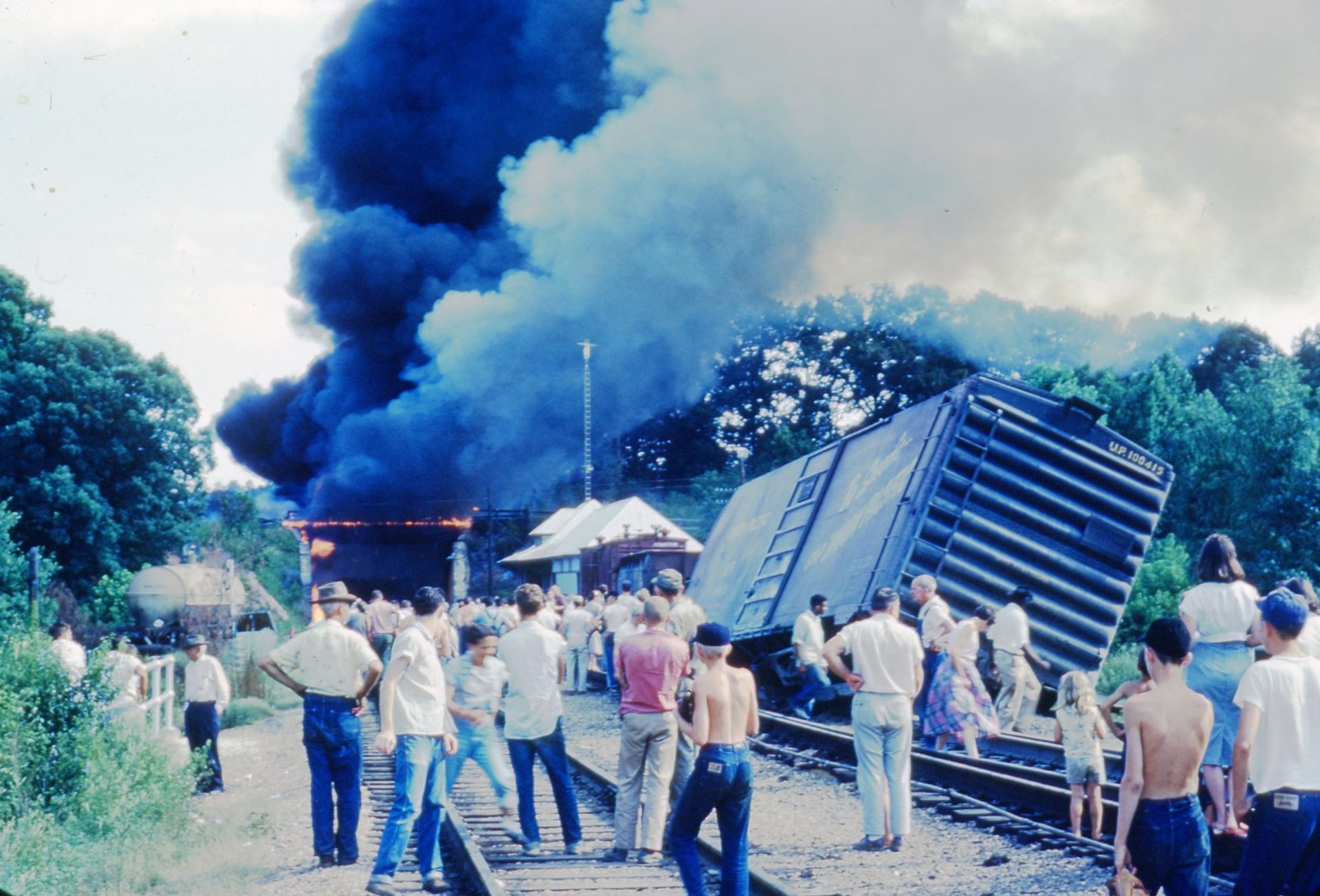W.C. Reese sent out a message at 4:55 p.m. July 7, 1959. As Chief Dispatcher for the Clinchfield Railroad Company, it was his job to get news to the company’s directors in a timely fashion. Less than an hour earlier near Marion, North Carolina, Train No. 97 suffered a derailment. Twenty-six cars, many of which were carrying alcohol, left the tracks and a fire was “fiercely burning.” It was the first communication about the calamity sent from his office in Erwin, Tennessee.
According to the official Accident Report, the cause of the crash was attributed to a “wrung journal” (a.k.a. an axel malfunction) on Seaboard Atlantic Lines car no. 8785 loaded with phosphate. A journal box held a car’s axels and helped to distribute the weight of the railcar and to keep the axels lubricated. If the boxes were not properly maintained, they could overheat and catch fire.
The train was travelling 40 miles an hour on its usual run from Spartanburg, South Carolina, to Elkhorn, Kentucky, that hot and clear day. There were 43 loaded cars and 41 empties. Firefighters from Old Fort, Nebo, and Marion responded to the scene. No injuries were reported.
 In the end, when all the bills were tallied, the derailment of No. 97 cost $232,070.37, chiefly made up of repairs to damage to tracks, equipment, and signals. Today, that would translate to roughly $2.5 million.
In the end, when all the bills were tallied, the derailment of No. 97 cost $232,070.37, chiefly made up of repairs to damage to tracks, equipment, and signals. Today, that would translate to roughly $2.5 million.
Bob Ruiz travelled from his home in Swannanoa, N.C., to photograph the derailment. His color slides are part of the Ruiz and Brown Families Papers housed at Western Regional Archive in Asheville. The Clinchfield Railroad Company Records are housed at the Archives of Appalachia at East Tennessee State University in Johnson City.
